Tarkhun or Estragon - the grass is unique, because it is widely used not only in cooking, but also in traditional medicine and even in cosmetology. If you are among those who want to close delicious cucumbers for the winter or prepare a fragrant drink, then carefully study all the recommendations for the cultivation of the etragona.
Estragon Plant - Description
Tarkhun or Estragon is a variety of wormwood. The plant is high, reaches in growth up to 1-1.5 meters and even more! And this is only an overhead part, the roots of the Tarkhun of an unusual shape, it seems like a dragon rolled upon a lump and decided to relax. Roots of plants are rustic and snakes.
If you look at the stems, they are straight and sharp, and the leaves are long, even pointed. If you look closely, then at the base of the stem, you will notice small leaves that differ in shape - they seem to be cut with scissors around the edge. Estragon blooms inconspicuous, if you do not look after, you can not notice blossoms. And if you are attentive, you can see the pale yellow flowers located on the top of the plants and the collected in the bundle.
Depending on weather conditions, bloom can start from July and up to September.
The fruits of this plant are small, maturation should be expected after 1-1.5 months from the moment of flowering.
Estragon - the plant is fragrant, all of its parts. This is the only plant from the kind of wormwood, which has a pleasant taste. All other plants from this kind have a bitter taste. Tarkhun has a pleasant fragrance, so this plant is more accepted to grow as a spice to add to the billet for the winter.
In addition, Estragon is grown to prepare therapeutic essential oil, which will help improve appetite, clean the body from slags and toxins, increase immunity, because in the oil oil contains a lot of vitamin C.
Tarragon. Photo
Tarragon. Growing conditions
A spicy plant is unpretentious, perfectly gets around with any climate, even if the winter was harsh.
But as any plant, loves good care. Therefore, if you want to raise this spice in your country, then you need to get acquainted with these rules:
- comfortable conditions for the cultivation of Tarkhun: a well-lit plot, a lot of sun. Then the plant grow well and gives a lot of greenery. If there is no such possibility, Tarkhun will feel nicely on both shaded areas;
- what should be soil: necessarily easy. If heavy loams prevail in your area, and perhaps even the soil is clay, then it is necessary to enrich such soil with a mixture of humus, peat and sand;
- estragona landing: in a lowland, but only you need to limit this plant from the convergence, because Tarkhun can even die. Estragon on sublime places will also feel great or if you want to make high beds;
- as for the soil, the plant does not like the soil to be acidic, so it will have to reduce acidity, adding a little flour (branch) or lime (powders), as well as grinding in powder of chalk and wood ash;
- if the soil is fertile, then there will be no problems with growing. The main thing is to make a slightly humidier + superphosphate. If the soil is scanty and sandy, then Tarkhun will and there rise into growth, but not so actively;
- what neighbors can not be seen next to this plant: these are chicory, salad and messenger. But if last year you grown legumes, and this spring you want to plant an etaragon in their place, the crop will be excellent;
- poking Estragona: in autumn or spring. Seeds need to be scattered by pre-prepared beds, pour out a thin ball of the Earth and be sure to moisten from the soil pulverizer. Also, the seeds of the etragon can be mixed with a small amount of sainted sand, and then dispel on the site. Then the earth will no longer have to pour out;
- how to plant herbal grass: Seeds are evisted by rows, with a gap between rows 30 cm. After 2 weeks with favorable weather conditions, the first seedlings will appear. When they get fixed, you can have thinning;
- cultivation of seedlings - the method is simple, so you can get an early crop of spicy grass;
- halfweed Estragon can be grown in one place for several years, but then you have to transplant the plant or update, because the greens become tough and not so fragrant.
Tarragon. Varieties of plants
In nature, there are only 2 types of this plant: with a strong, pleasant aroma and tarragon, completely devoid of fragrance. In cosmetology, as well as cooking, an aromatic tarhoon is used, which can be grown independently.
Varieties of this species are very much, get acquainted with popular:
- gudwin variety - an adult plant reaches in growth to 1m, the green mass is thick and beautiful. A year after landing, you can collect the first harvest, 1 time it is quite possible to assemble 600 g of fragrant ethanegon. The leaves are very fragrant, with a light bar of the mustard. This variety is used in cooking, spice is added to fish and meat dishes, used for conservation;
- tarkhun "Valkovsky" - is widely grown in Russia, because the grade is hardy and well tolerates small frosts. Matte leaves, with a weak fragrance;
- the "Monarch" variety is a perennial plant, the leaves with a pronounced aroma. The adult plant grows up to 1.5 m. Used in cooking both fresh and dried leaves;
- the "Dobrynya" variety is the most useful and no less fragrant, hardy, not afraid of decrease in temperature, easily tolerates heat. Ascorbic acid, carotene and essential oil are present in the composition of the leaves. In one place without transplanting, it grows up to 10 years, with regular rejuvenation of bushes (every 3 years);
- grade "Zhulebinsky Semko" - the height of the stems from 60 cm to 1.5 m, dense foliage, the aroma is sharp and spicy. This variety is used for the preparation of refreshing drinks and for conservation.
Mexican estragon: spicy and at the same time bitter, is widely used to prepare refreshing cool beverages and tea, as well as as seasoning to chicken meat, for preservation:
How to grow ethagon from seeds
At home, you can try to grow Tarkun from seeds. Just be prepared for what can happen anything, because some types of this plant are not multiplied by seeds. But if you purchased a package with seeds, then you can hope for a positive result.
Estragon of seeds at home:
- Since the roots of this plant do not grow up, then you can grow Tarkhun to prepare the drinks at home, in the usual pot.
- Preparation of fertile soil (light, neutral acidity): We recommend purchasing a ready-made soil, put the pot to the bottom of the pot, and then pour out the soil.
- How to sow seeds: Put the separation seeds with a thin layer on the surface, pour the ground (no more than 1 cm layer).
- Do not forget to moisten the soil and constantly ensure that it does not drive.
- When the first shoots appear, the soil must be moistened exclusively from the spray gun so that weak sprouts do not die.
- You can speed up the process if you soak pre-seeds. By the way, if you put an etaragon on the last week of February, you can have time to grow strong seedlings to the beginning of the summer season.
- Seeds need to soak by 3 or even 4 days in a special solution for soaking seeds (sold in specialized stores).
- The pot with seeds should be put on a well-lit place, for example, on the windowsill.
- After planting Tarkhun seeds, cups or tray are desirable to cover with a film, and it will be possible to remove it after the first shoots will appear.
- The room temperature should not be descended lower than +16 degrees.
- If you see that the seeds went together and are located close to each other, they interfere with developing, it is necessary to break up.
- When a full-fledged 2 leaves appear, you need to pick up.
- Estragon's hardened seedlings can be planted in an open ground when the weather will be settled. Short-term freezing with young plants are not terrible.
Estragon to grow easily and just at home from seeds, right in the pot. You can buy Estragonian seeds in a specialized store where seeds are sold and related products, as well as order in online stores.
After sowing and successful shoots, young plants can be left in one spacious pot. Piking - only as necessary. Water - moderately, it is impossible to pour seedlings, because this plant does not like when the roots were moistened. That is why before proceeding to landing seeds, it is necessary to choose the right thing. If it is the usual soil from the garden, then it must be mixed with a vermiculite or perlite (for absorbing extra moisture) so that the soil turns out loose and missed moisture, as well as air. Estragon's pot will feel perfectly on the east side. If we noticed that the plant is drawn up, and the leaves do not develop, then most likely the ethagon is not enough sunny rays.
Methods of reproduction of Estragona
When there is no way to collect seeds or acquire them, you need another approach:
- The reproduction of Estragone with cuttings. On 3-4 week of May, it is necessary to cut the cuttings from an adult plant, up to 15 cm long. The lower part (cut), it is necessary to omit into the liquid with the row. A day after such extracts, the cuttings can be placed in the soil (ground, humus and sand in equal proportions), deepen 5 cm to the maximum, wrapped with a film to create a mini-greenhouse. The soil should always be wet, but not overcooked. Film you need to open every day to air the soil. A month later, when the cuttings are rooted, they can be transferred to bed.
- How to grow Estragon with grains: Choose a developed stem (the age of the plant is 1-2 years). The stem is needed in a spring in the prepared groove (deep to do no need). It is convenient to use a special hairpin to fix the stem. From the bottom on the stem, it is necessary to make 2-3 shallow notches, sprinkle soil, moisturize. Next year, check your work - the stem should be rooted and can be cut off from an adult plant. If desired, to transplant to the permanent place of cultivation.
- How to propagate the estragon root: old bush plants need to dig, perform the root treatment (cut patients, curves and old sites), divide the rhizome to equal parts, only that each piece has from 2 to 4 vegetative kidneys. Roots need to land on a new bed.
Astragon care
The plant is unpretentious, so care can be limited to cleaning the beds from weeds, ensure moderate watering.
Read more, how to care for the plant:
- moderate watering is obligatory. If the weather is stable, then there is enough plant every 2 weeks, if a dry summer was outstanding - more often;
- furinating soil: diluted cowper in spring, before the start of flowering. The second feeding - after flowering, under the bush you need to make a glass or a little more dry ash;
- when do you need to cut green parts of the plant? As it grows, it is possible to cut into the root (leave the above-ground part 15 cm). Estragon grows quickly, so the first young and very fragrant sprouts will soon appear;
- at what period, it is necessary to cut the greens on the billet of the spice: since the end of April and until the end of June. Hurry to collect raw materials need to flowering. The collected greens must be dried in a shaded place, and then separate from the stem and be confused into powder. It is necessary to store such raw materials in special containers for spices;
- if noted that the Estragon's bushes are yellow, then you will have to cut everything completely literally under the root, process the soil with a special mixture;
- 4-5-year-old plant is desirable to update, because over the years, leaflets lose the fragrance.
Application of fragrant estragona
If you correctly dry the young leaves of this plant, they can be added to tea, make refreshing drinks. In leaves and shoots a lot of useful substances that improve the work of the intestine, the stomach and the heart muscle. Infusions of the etragona are used to purify the body from parasites, like a sedative and light sleeping pills. The dried raw materials fall asleep into the cup, poured boiling water, insist 10 minutes, filter. This tea can be drunk several times a day.
Fresh Estragon leaves are added for the harvesting of cucumbers, marinades, cabbage, as well as apples.


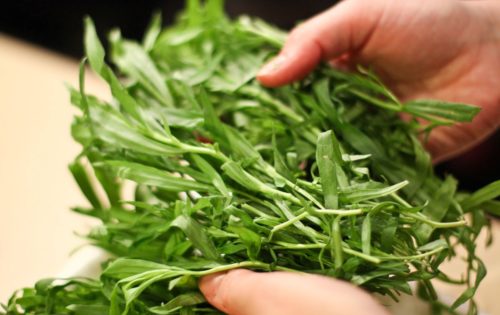
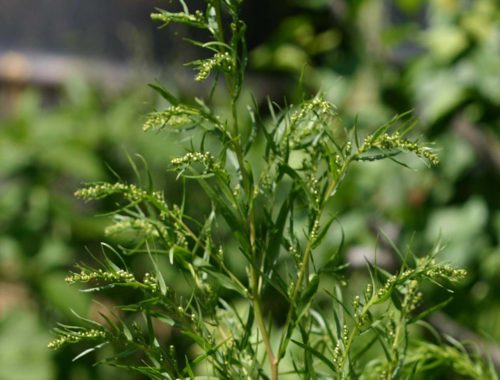
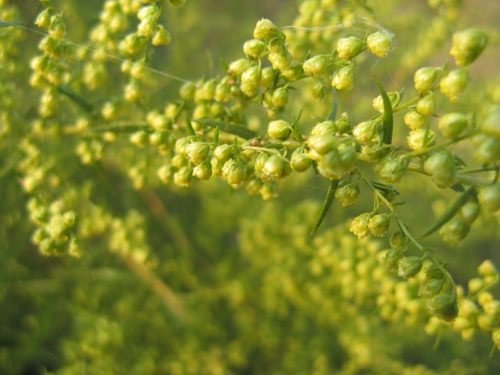
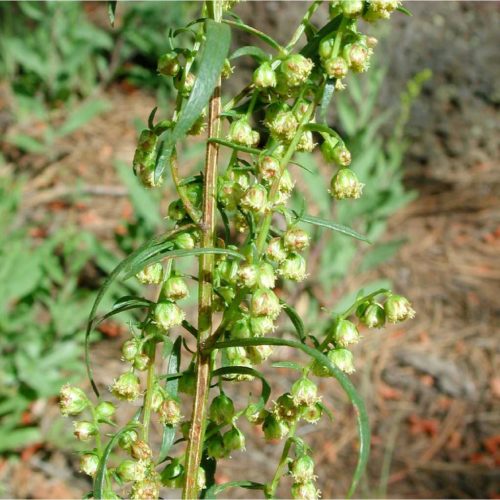
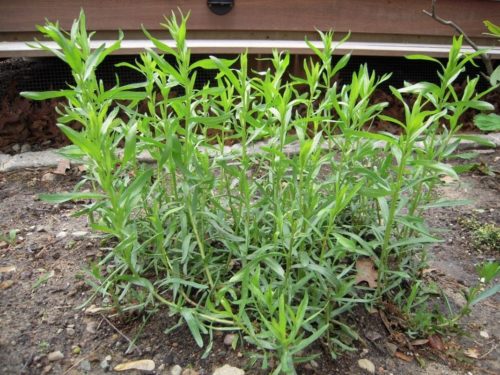
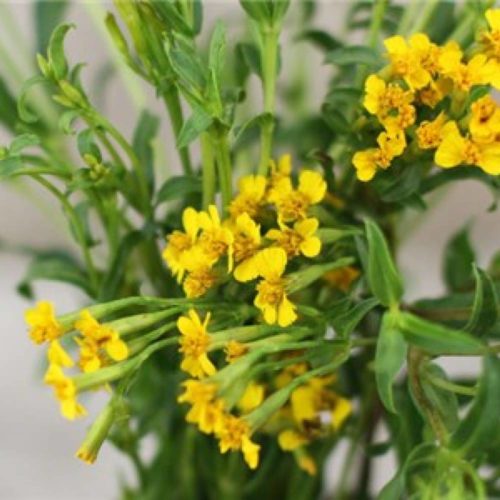

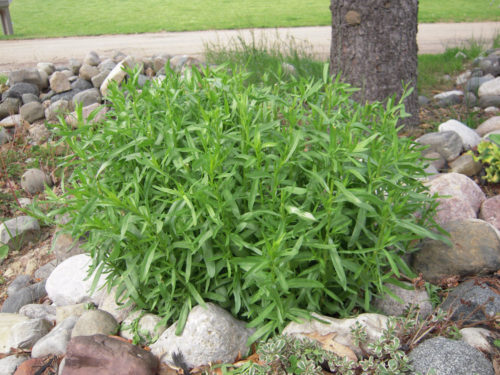

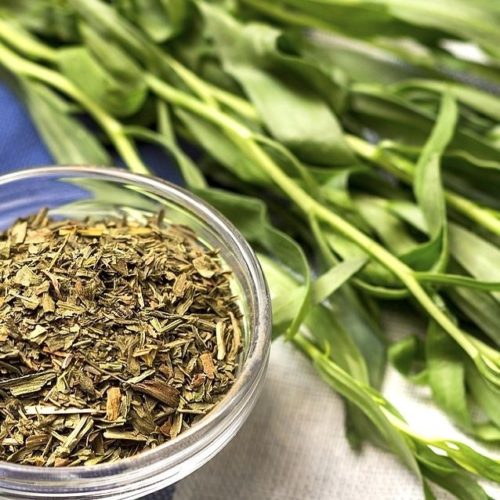












 Start a discussion ...
Start a discussion ...